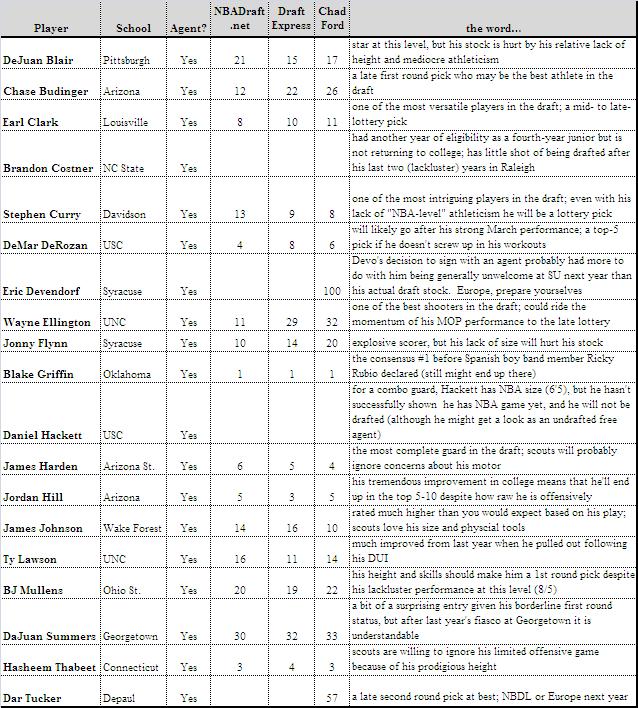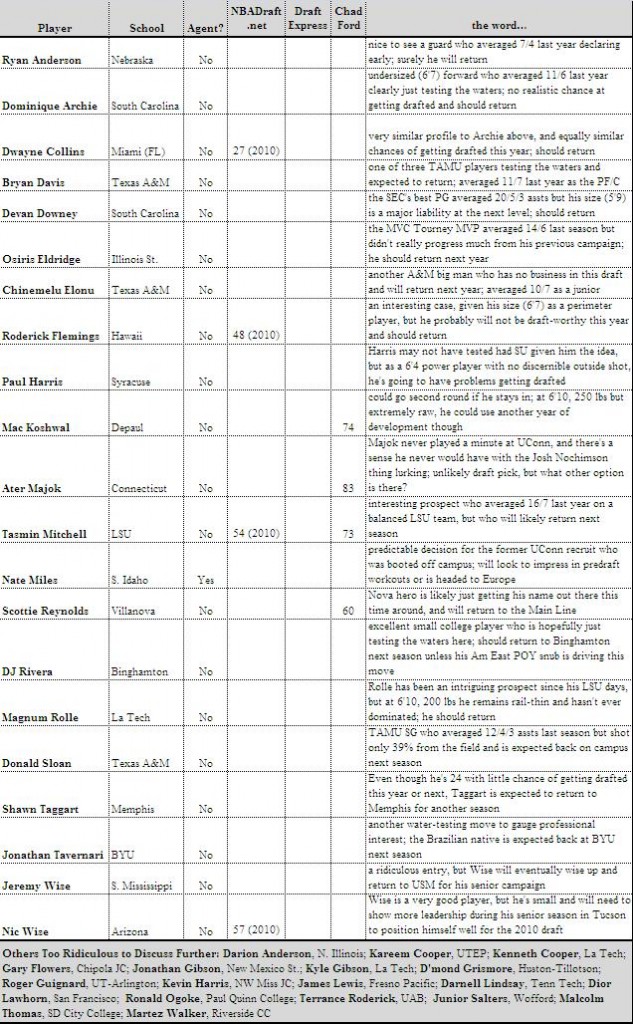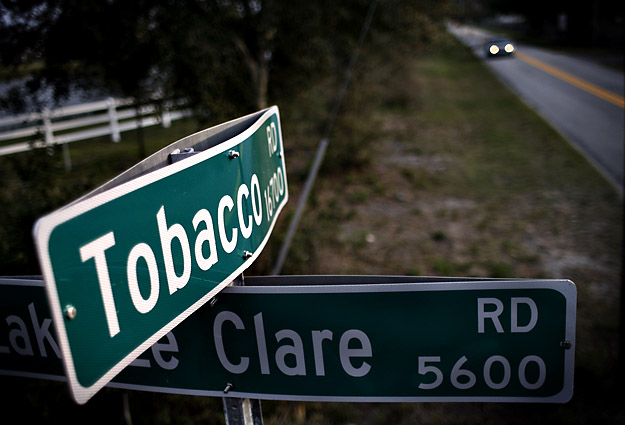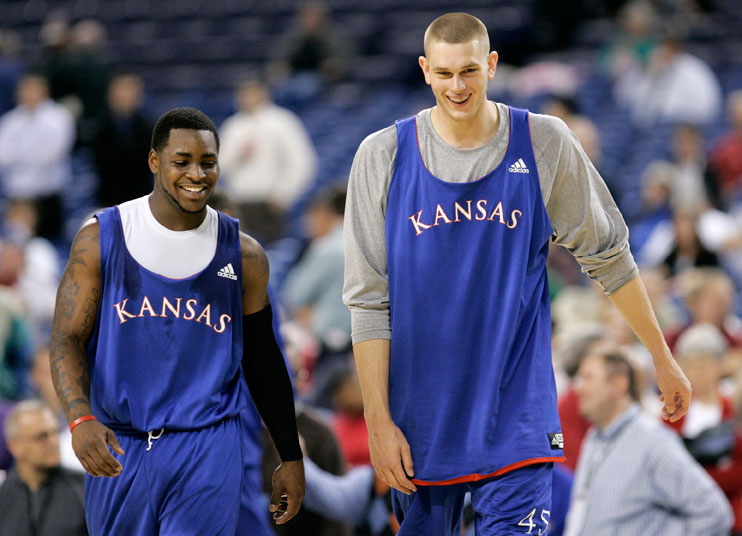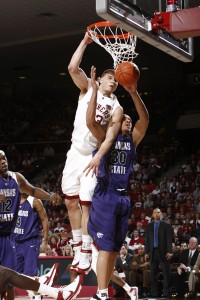Andy Katz wrote in his blog today that the NCAA Legislative Committee voted on Monday to make a rule change effective in 2010 that would shorten the amount of time that an early entry would have to ‘test the waters’ with NBA teams before making a final decision to enter the draft.
If the NCAA board of directors endorses the legislative panel’s decision to reduce the early entry decision window from six weeks to approximately one week, there won’t be any reasonable way for underclassmen to test the draft process. USA Today first reported the panel’s decision, which would make underclassmen decide by May 8 whether they were staying in the draft. The current deadline is 10 days before the draft in mid-June. (The rule would go into effect for next year’s draft class.)
This legislation was the compromise position after the ACC came to the table asking for a ten-day window following the conclusion of the national championship game. We’ve written about this before, but let us reiterate for those of you who missed our first tirade: this is a TERRIBLE decision.

As Katz points out very clearly in his post, the withdrawal deadline would then become somewhere around the end of the first week of May each year, which would allow players a window of a mere 7-10 days in which to make themselves available for private workouts with NBA teams. And if you’re like us and your collegiate days are well into the rear-view mirror, you may have forgotten that the end of April/beginning of May also usually coincides with exams for most college students around the country, even those who play basketball on the side. In other words, the NCAA is making it that much harder for a prospective early entry to get good feedback on his status.
Let’s take a quick look at a system that generally works – the current one. Last year, there were 69 American players who originally decided to test the waters. Thirty-five of those players felt confident enough in their standing to stay in the draft, and 28 of those (80%) were actually selected on draft night in MSG (21 with guaranteed money in the first round). Now we aren’t going to say what was going through the heads of every one of those 34 players who returned to school (guys like Josh Akognon, Chase Budinger, Jerel McNeal and of course the Carolina trio), but we’d absolutely wager that many of them iniitally thought they were ready for the NBA. It was only after they were able to get objective feedback from NBA scouts and teams as to their projected draft status that they were able to make an informed decision to not cede their remaining eligibility on a gut feeling.
How quick we are to forget our history. The reason the early entry withdrawal rule was initially instituted was to allow players like Scotty Thurman and Thomas Hamilton to get good, objective feedback on their draft status prior to making a final decision. It’s very easy to think you’re a lottery pick when you’re the best player on a successful college team and everyone around you is telling you that you’re a superstar. It’s less easy to think that when scouts tell you that you’re undersized, need to work on your shooting or you’re slow for your position at the next level (i.e., the truth). What the NCAA is endorsing here is the opportunity for more of the former and less of the latter, which will ultimately mean that more players are going to make an ill-informed gut-based decision to stay in the draft, only to be surprised when they’re not chosen six weeks later. It’s bad for the players’ futures, who throw away an opportunity at a degree and further training in basketball; it’s bad for the schools who could benefit in many ways by getting key non-NBA-ready players to return (cough, cough, UNC), and it’s bad for the game itself, which is always enriched when the players who should still be playing at that level are actually doing so.
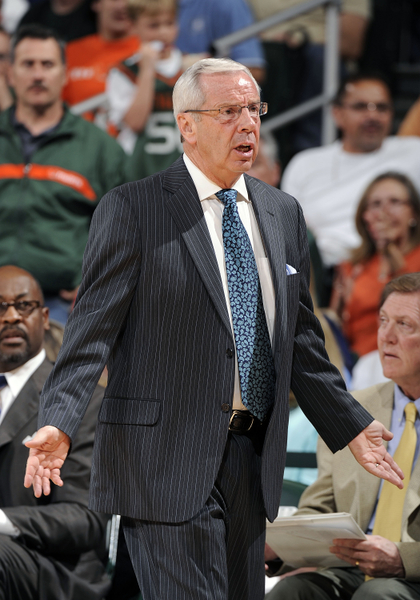
Now, we know who is driving this – the coaches (how dare some of these guys complain!). Despite all the hollow and vacuous lip service they give to being there for their kids and wanting only what’s best for their players, what they’re really doing is making life easier on themselves. By shaving five weeks from the early entry withdrawal deadline, it will now give Coach Blowhard another month to finish recruiting, shore up his roster and adequately plan for the next season. There is some merit to this position – some – but by making it eminently more difficult for his players to learn their individual strengths and weaknesses from an objective source prior to the withdrawal deadline (e.g., the NBA Combine, scheduled to start in late May of this year), they’re much more likely to fall back on gut instincts which will almost always favor the dream of the NBA over taking more exams. Any benefit to the coach and program by this initiative is more than lost by enabling poor decisionmaking from the players.
From our stance, this is an unconscionable position for the coaches to take, especially given how much they talk about helping their players get to the next level, and we’re extremely disappointed in this decision. Let’s hope the NCAA Board of Directors shoots it down next week.





























